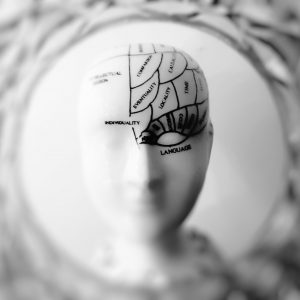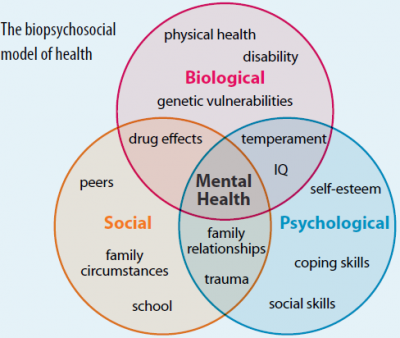Biopsychosocial Approach
By Christine Ferch
There are many components which make up a person, and these components have an impact on how we think, feel, and behave. Due to the cyclical nature of the triad, it is essential to consider our biology: physical health, psychology: mindset, and social: our social influences from family life, school, friendships, work and the environments we have these social engagements.

Bio: This is the biological or physical health component of an individual’s life and encompasses everything medical related to the body. Many different physical health problems affect our mindset and can lead to mental health problems. Some of these include childbirth and the onset of postpartum depression, chronic pain: depression, Cancer: depression, anxiety, hyper or hypothyroid: depression, anxiety, ADHD. The onset of the biological factor and the mental health symptoms may be unknown, or an individual may be genetically predisposed or a natural process of life.
Additionally, those who are enduring narcissistic abuse can develop medical problems such as migraines, IBS, weight loss or gain, hair loss, adrenal fatigue, hypothyroid and rheumatoid arthritis. Part of this is due to our environment/social world causing a change in the individual’s mindset in a negative way.
Psycho: Psychology, our mindset. Our mindset encompasses our emotions, behaviours and psychological distress, fear, avoidance, core beliefs, our inner critic, resiliency, and coping mechanisms. Psychological also includes and mental health diagnosis a person may have.
To connect the psychological to the biological from the psychological standpoint, can cause biological or medical concerns. Individuals with anxiety and depression are at risk of severe weight gain or weight loss which can impact their biological functioning such as cardiovascular health. PTSD can impact our digestive systems or ways to regulate our parasympathetic and sympathetic systems (for more info on these systems, check out my blog on the CNS).
Social: Our social world includes family, friends, teachers, significant others and the environments we engage with them. From the narcissistic abuse example, a person who is enduring this in their relationship may slip into depression with low feelings of self-worth and confidence. The walking on eggshells can lead to feelings of anxiety and being overwhelmed. When we have a supportive people or environments in our social circle, we feel safe and secure, and when we feel this, our mind and body are calm, and processes such as fight, or flight are not ignited. We do not feel we need to walk on eggshells, and we do not need to worry about food or safety. When our environments and the people who are in them are not supportive and neglectful, the individual can develop negative thought patterns and core beliefs. These thoughts and beliefs can lead the individual in mental health distress such as eating disorders, depression, anxiety generalized or specific, PTSD, personality disorders.
This example takes us into how our environment can impact our biological and psychological realms. When living in a narcissistic abusive relationship, your partner and environment are not healthy. This unhealthy environment impacts how our other systems function.
Children who have healthy living environments in childhood with authoritative but comforting parents, grow to be well adjusted. They have positive social circles, have supports which build positive coping strategies. These children, due to positive childhood, are more likely to demonstrate emotional awareness leading to reducing the onset of severe mental health concerns. They are also more likely to carry these positive traits and coping strategies into adulthood.
Children who grow up in impoverished areas, with little needs met based on Maslow’s Hierarchy of needs (see my blog with the same title for more info on this topic). These children are at higher risk of maladaptive behaviours, increase mental health concerns, cardiovascular problems, obesity. Additionally, they usually have inappropriate or unsupportive social circles.
To simplify this approach, here is a diagram outlining how these three factors interact with each other.

For more information or if you have any questions, contact us at admin@ovcs.ca




